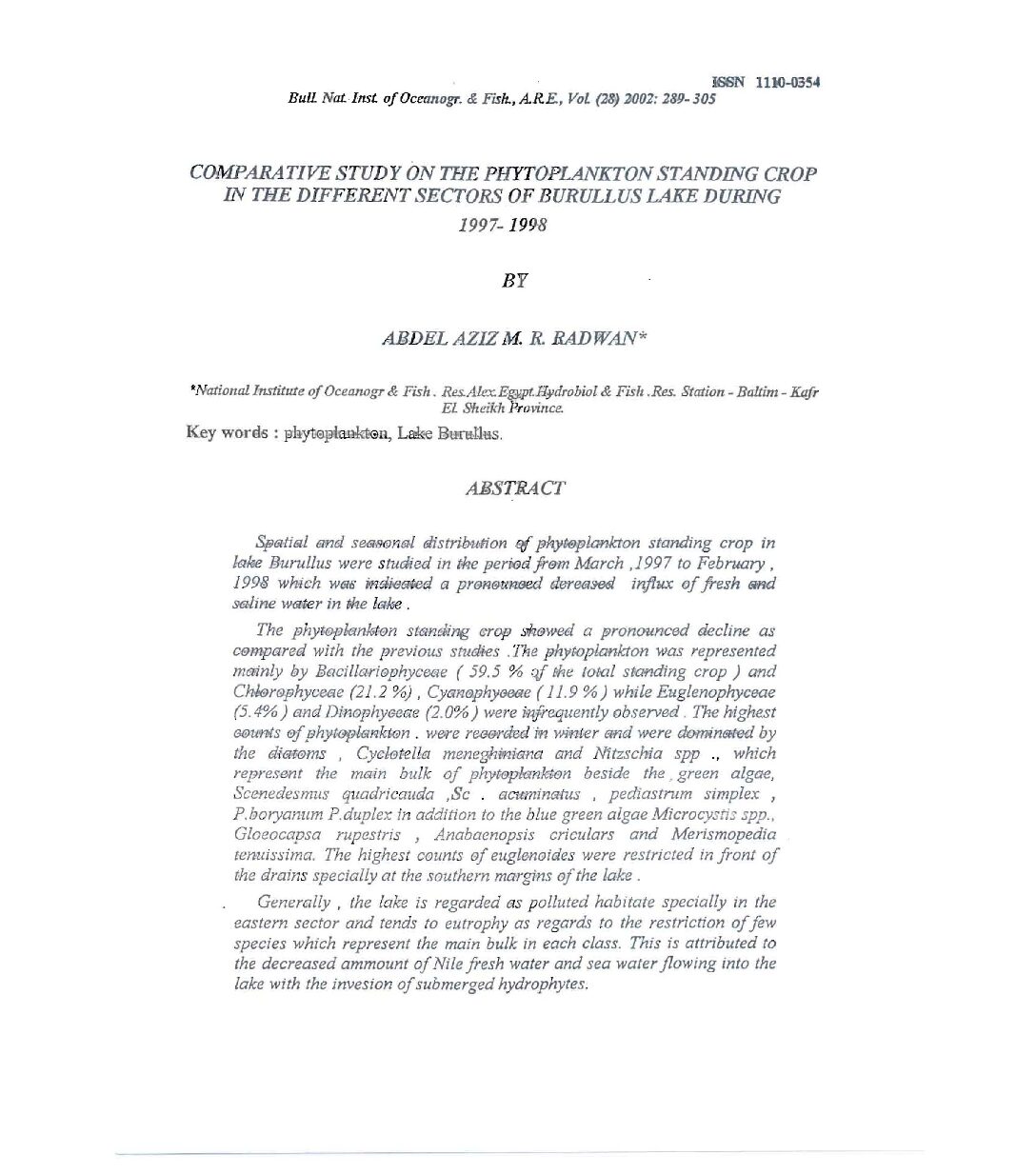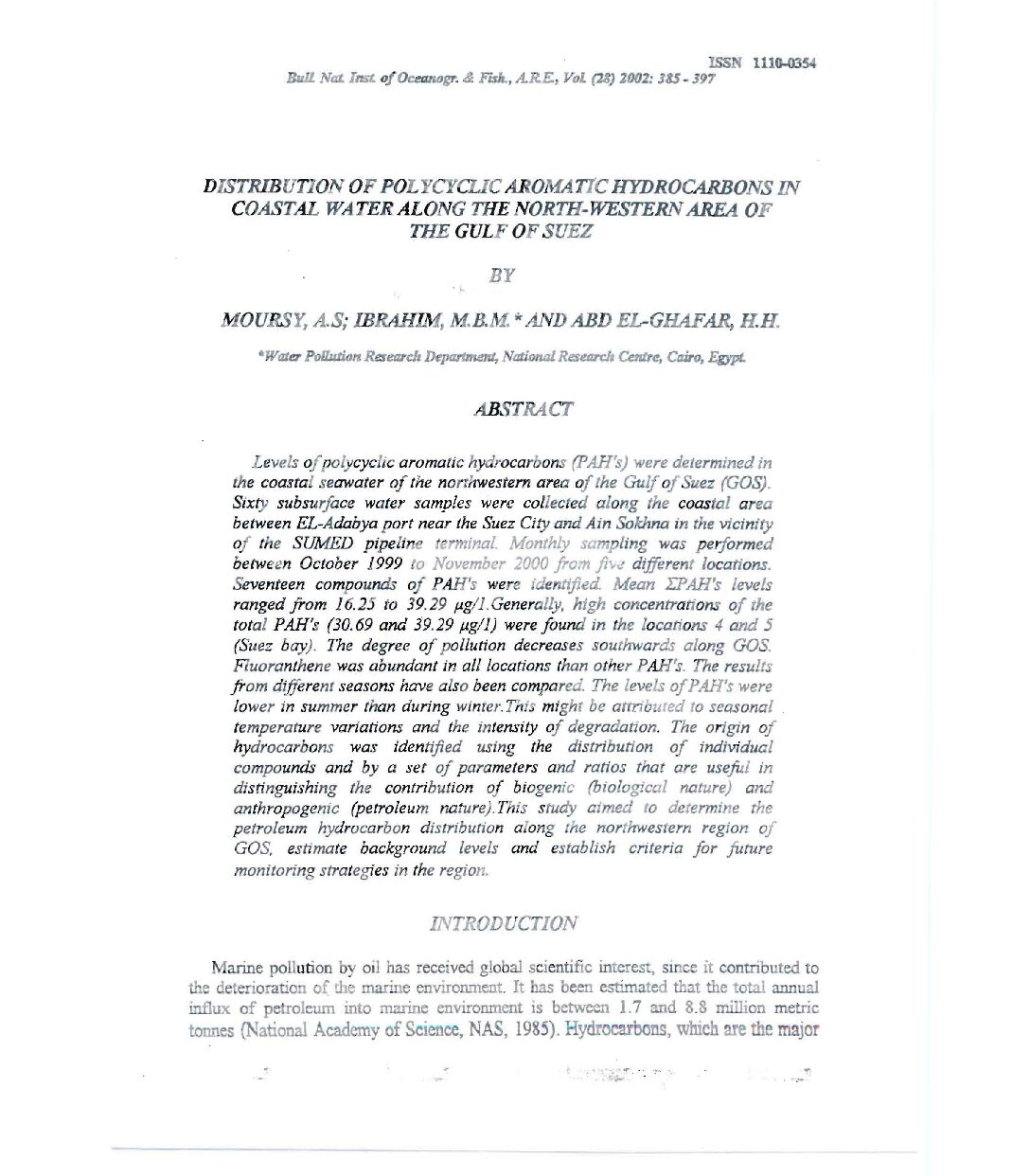Categories
vol-28ASYMETRICAL STRUCTURES IN THE GULF OFAQABA
BY
A. Z. HAMOUDA*ANDA. EL GENDY**
• Marine Geophysical Dept., NatWnal Institute ofOceanography, Alex., Egypt.
“Physical Dept., Faculty afScience, Alexandria University, Egypt.
Key words: Strike slip fault, Gulf of Aqaba, Aragonese, Dakar, Amona
ABSTRACT
Continental rifting along the Gulf of Aqaba is a complicated tectonic
process, ~hich is not completely understood. Interpreting these fracture
zones as large-scale, left lateral strike-slip faults, the problem arises that
there is no obvious way in which the active faults. This study concerns the
asymmetrical structures between the two sides of the Gulf. Also, it is
concerned on the location of the depression axis (axis of movement) in
between the two borders ofthe Gulf ofAqaba and the distribution ofthe
seismic activity. By using the simple statistical analysis ofthe bathymetric
digital data and study seismic activity record will carry to study the
asymmetrical seafloor strnctures ofthe Gulf
The results demonstrate, according to the distance variation of the
borders towards the axial depression and the seismic activity, the Gulfcan
be divided into three distinct asymmetrical areas, representing different
stages in the evolution ofthe rift. These areas consist ofa southern section
(from 28.2 0 to about 28.7 0 N) in which slightly seafloor spreading is
occurring (the axial depression moved towards the eastern border and has
low seismic activity), a central transition zone (from 28.7 0 to about 29.0 0
N) which contains isolated cells of seafloor spreading (the axial
depression changes slightly from the eastern towards the western border
and has high seismic activity which is concentrated at easrern side), anda
northern section (from 29.0 0 to 29.5 0 N) which is currently in the
continental rifting (the axial depression lies nearly in the central part
between the two borders and it has medium seismic activity which is
concentrated at the western side).







